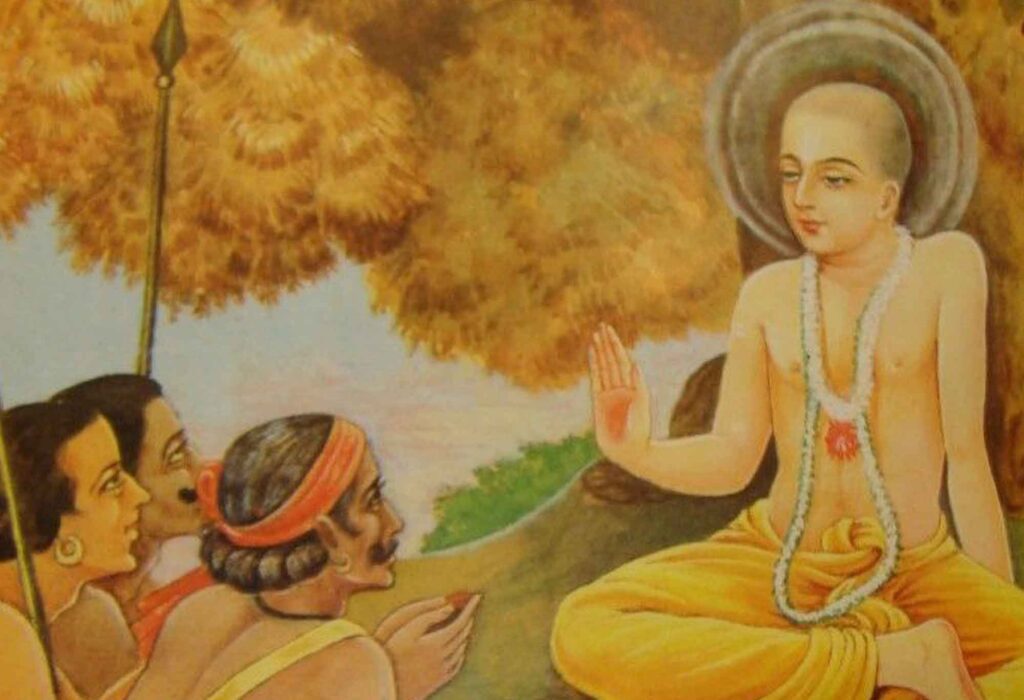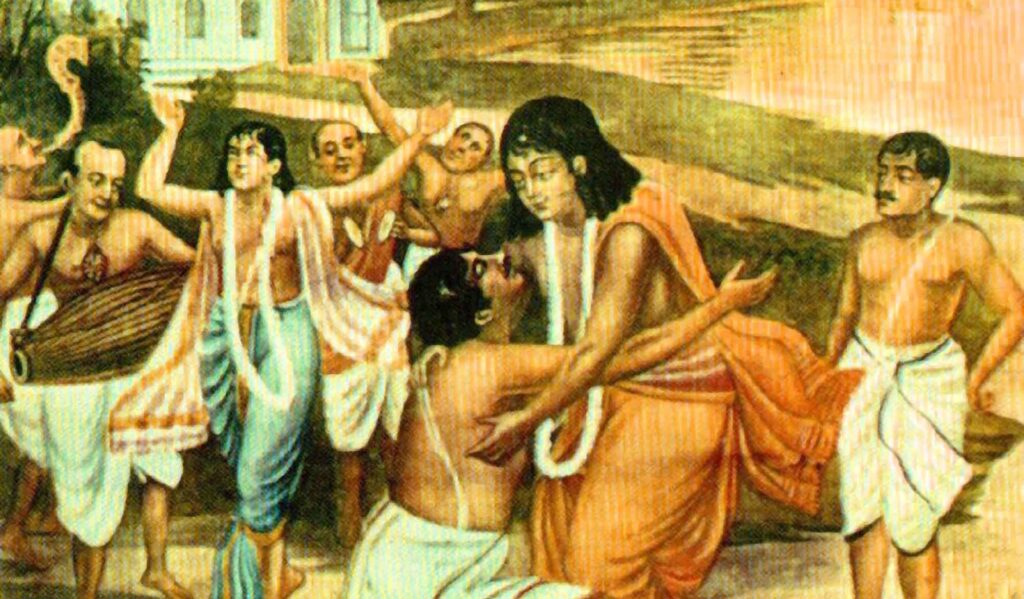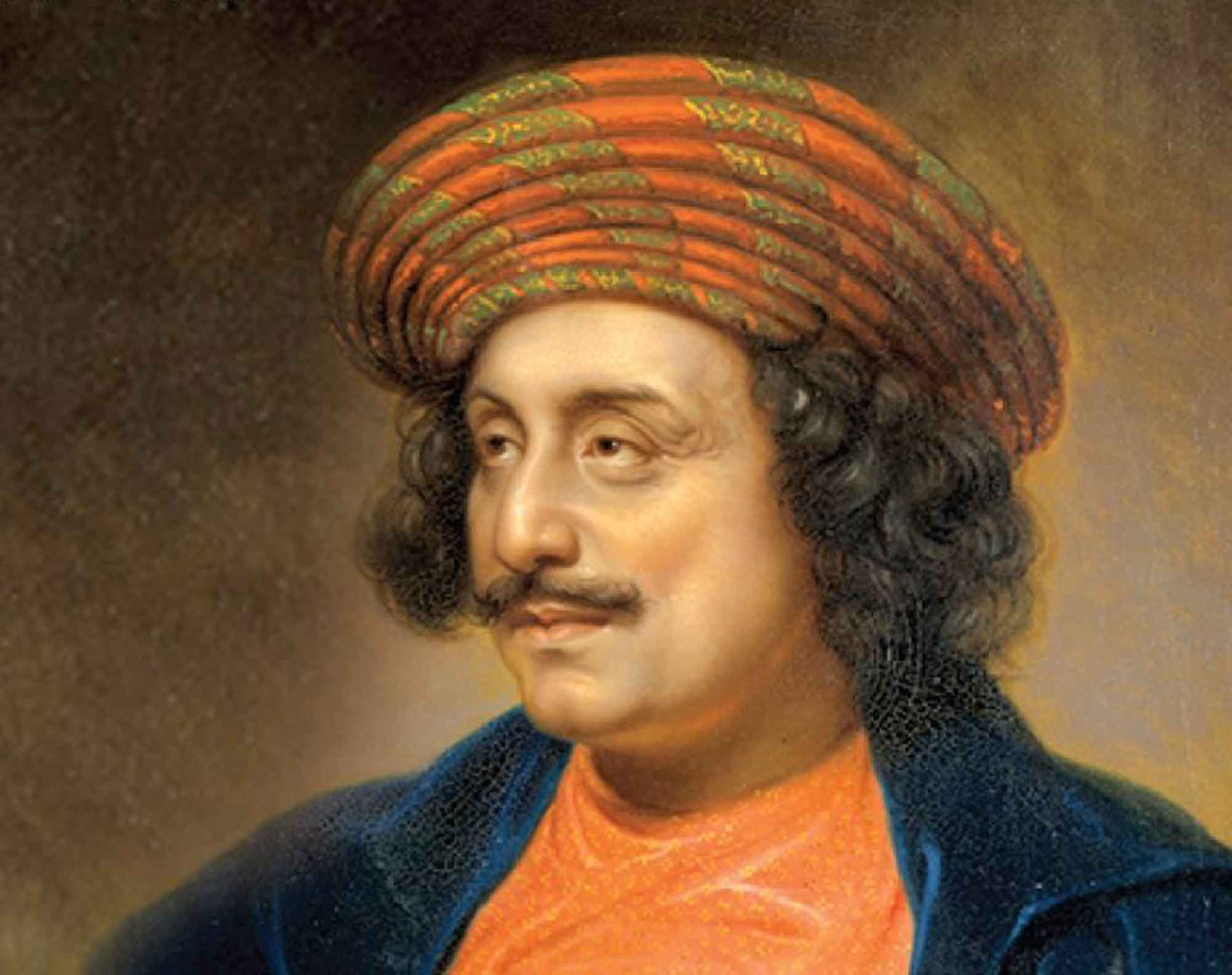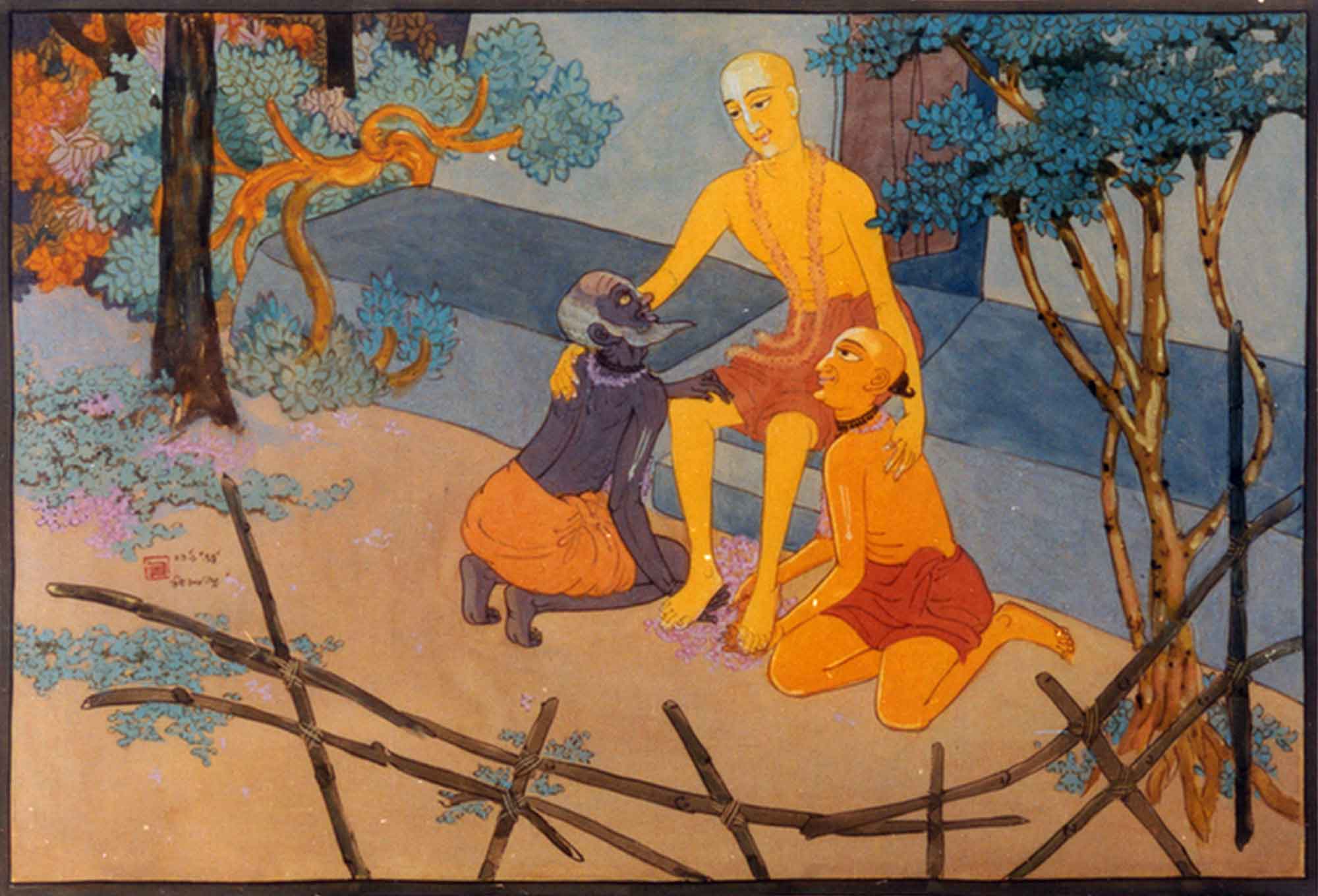Overview
Vaiṣṇava Sevā u Pracalita Mahotsava Prathā (Service to the Vaiṣṇavas and the Practice of Festivals at Present) was first published in Sajjana Toṣaṇī, Vol 4. Issue 5. Herein, Bhaktivinoda Ṭhākura describes the three types of Vaiṣṇavas according to Caitanya-caritāmṛta and what is actual Vaiṣṇava sevā.
(translated by Swami B.V. Giri)
In response to a question from the great devotee Satyarāja Khān, Śrīman Mahāprabhu said:
prabhu kahe vaiṣṇava sevā nāma-saṅkīrtana
(“The Lord said: Engage in service to the Vaiṣṇavas and nāma-saṅkīrtana.” – Cc. Madhya 16.70)
From this important statement we understand that Vaiṣṇava sevā (service to the devotees) is the main duty for the householder Vaiṣṇavas. The Lord has described how many types of Vaiṣṇava sevā there are such as this:
ataeva yāṅra mukhe eka kṛṣṇa-nāma
sei ta’ vaiṣṇava, kariha tāṅhāra sammāna
“Thus, one whose mouth is chanting kṛṣṇa-nāma is understood to be a Vaiṣṇava and he should be shown respect.” (Cc. Madhya 15.111)
kṛṣṇa-nāma nirantara yāṅhāra vadane
sei vaiṣṇava-śreṣṭha, bhaja tāṅhāra caraṇe
“One who continuously chants kṛṣṇa-nāma Lord is the best of Vaiṣṇavas, and you should worship his feet.” (Cc. Madhya 16.72)
yāṅhāra darśane mukhe āise kṛṣṇa-nāma
tāṅhāre jāniha tumi vaiṣṇava-pradhāna
“By seeing such a person, the mouths of others will chant kṛṣṇa-nāma, so you should consider such a person as the best of Vaiṣṇavas.” (Cc. Madhya 16.75)
krama kari kahe prabhu vaiṣṇava lakṣaṇa
vaiṣṇava vaiṣṇavatara āra vaiṣṇavatama
“Thus the Lord spoke about the distinctions amongst Vaiṣṇavas—the Vaiṣṇava, Vaiṣṇavatara (a better devotee) and Vaiṣṇavatama (the best devotee).” (Cc. Madhya 16.75)
The significance of this is that kṛṣṇa-nāma is very rare, because the syllables that are uttered by a person who is chanting can sometimes be the Name or sometimes nāmābhāsa according to the steadiness of their heart (hṛdaya-niṣṭhā). When the chanting of the syllables of the Holy Name are covered by anyābhilāṣa, jñāna and karma etc. (other desires, knowledge leading to mukti and materially pious activities), that is nāmābhāsa. When the chanting of the syllables of the Holy Name are devoid of bhagavata-tattva-jñāna (a proper conception of the Absolute truth), that will be chaya–nāmābhāsa (a reflection of the Holy Name). By proper association, chaya–nāmābhāsa gradually becomes the actual Holy Name. When the chanting of the syllables of the Holy Name are tainted with the desire for bhukti (material enjoyment) or mukti (liberation), that is pratibimba-nāmābhāsa. When nāmābhāsa is connected to this particular offence, it gives rise to many, many types of wickedness. If a jīva can chant kṛṣṇa-nāma purely even once (that is, if the name is not nāmābhāsa), then he can be successful. If you happen to see that person, he should be respected as a Vaiṣṇava. If he constantly chants śuddha–nāma, one should worship him by taking his caraṇāmṛta (water that has washed his feet), caraṇa–reṇu (foot-dust) and honour his ucchīṣṭha (food remnants). If upon seeing him, the Name of Kṛṣṇa comes to one’s mouth, this means that his prema-śakti is so powerful that it can naturally affect the heart of those jīvas that are near to him – and it is stated that one should surrender oneself to such a guru who is a supremely worshippable bhāgavatottama (superior devotee). In this way, showing respect to a Vaiṣṇava according to their gradations is called Vaiṣṇava sevā. Undoubtedly, when the jīva performs Vaiṣṇava sevā, he becomes successful.
Nowadays, there is a certain practice that goes on in the name of mahotsava (festivals). Many consider this to be Vaiṣṇava sevā. Actually, without service to pure Vaiṣṇavas, it is not Vaiṣṇava sevā. Even if there is a small number of pure Vaiṣṇavas, there can still be Vaiṣṇava sevā. Both pure Vaiṣṇava householders and renunciants are found in society. According to Śrīman Mahāprabhu’s instructions on Vaiṣṇavas, there is no difference between householders and renunciants. Some people beg from materialistic persons in the name of Vaiṣṇava sevā. In this regard, Śrī Caitanya-caritāmṛta has the following advice:
viṣayīra dravya lañā kari nimantraṇa
prasanna nā haya ihāya jāni prabhura mana
mora citta dravya laite nā haya nirmala
ei nimantraṇe dekhi pratiṣṭhā mātra phala
(“By accepting things from materialistic people and inviting the Lord, I know that His mind is not pleased by this. Due to this, my consciousness is impure. Thus, by this invitation, I will only obtain some mundane prestige.” – Cc. Antya 6.274-5)
Also, the Lord has stated:
viṣayīra anna khāile malina haya mana
malina mana haile nahe kṛṣṇera smaraṇa
viṣayīra anna haya rājasa nimantraṇa
dātā bhoktā duḥhāra malina haya mana
(“By eating the food of materialists the mind becomes polluted. When the mind becomes contaminated, in cannot remember Kṛṣṇa. The food of a materialist is in the mode of passion. One who gives it and one who takes it are both polluted.” – Cc. Antya 6.278-9)
Here, those who are attached to material sense-enjoyment are called viṣayī (materialists). In the world of Kṛṣṇa, a householder is never called a viṣayī. Householder Vaiṣṇavas perform Vaiṣṇava sevā with special care.
(‘Service to the Vaiṣṇavas and the Practice of Festivals at Present’ by Śrīla Bhaktivinoda Ṭhākura was first published in Sajjana Toṣaṇī, Vol 4. Issue 5. and translated into English by Swami B.V. Giri)













